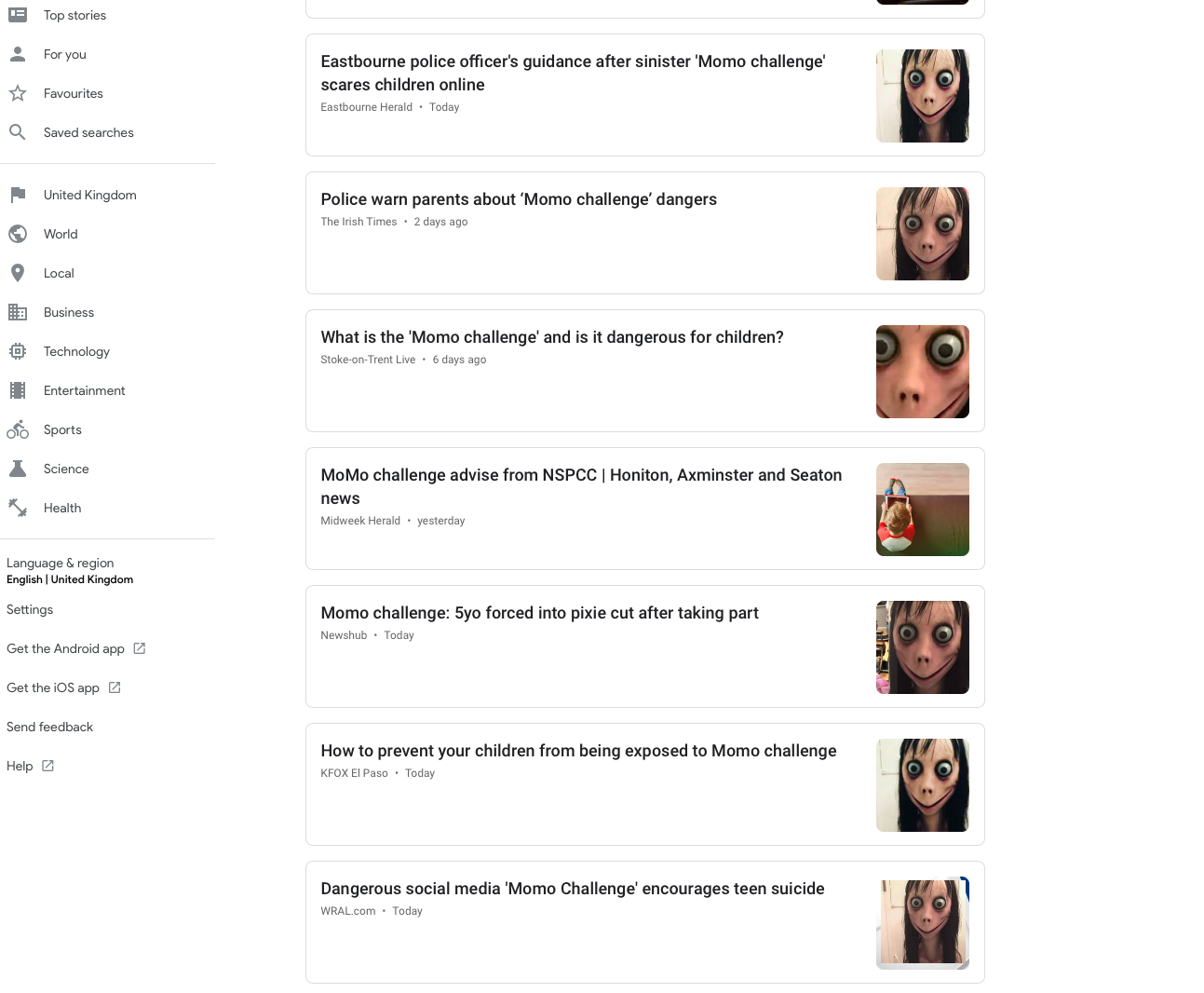
The Momo Challenge: a press-driven panic over a non-existent threat
The Momo Challenge has been all over the internet - and the papers. Only one small problem: it doesn't exist.
Over the past 48 hours, the media has been at its best, quickly spread word via its sites, papers and social media presences that the Momo Challange has been embedded in videos and other social media, causing harm — and even death — to children.
Just look at these stories from Google news:

Except…
There is no evidence at all it exists, as Snopes pointed out as early as the 26th February. More expert reporters have questioned it, pointing out that it fits the model of other, similar panic-inducing hoaxes:
It's likely a hoax; https://t.co/1AdVXxK6Vi https://t.co/pH0EXxG2pl
— Larry Magid (@larrymagid) August 27, 2018
This morning, The Guardian's Jim Waterston has dug deeper:
But the Samaritans and the NSPCC have dismissed the claims, saying that while there is no evidence that the Momo challenge has initially caused any harm itself, the ensuing media hysteria could now be putting vulnerable people at risk by encouraging them to think of self-harm.
The reporting of the challenge is causing more damage than the probably non-existent threat.
So, what's happening here? Somebody has come up with a scare story (which has been circulating for months). That gets shared, un-checked, by people who, quite naturally, want to protect their kids - and all kids. And all of that is understandable, and probably unchangable. There will always be bad actors who get a kick out of spreading fake rumours, and people who share that out of the best of intentions.
But the next step is the problem. When multiple media outlets start repeating this story, without any serious fact-checking, they heighten the moral panic. And they spread it. They are spreading misinformation, which some people might call "fake news".
Waterston again:
The rumour mill appears to have created a feedback loop, where news coverage of the Momo challenge is prompting schools or the police to warn about the supposed risks posed by the Momo challenge, which has in turn produced more news stories warning about the challenge.
The scale of the content produced is staggering:
Hundreds of separate articles have been written on the topic by British news websites in the last three days, dominating the most-read lists on tabloid news sites. These include explainers for concerned parents on how to protect children from the supposed risks of the challenge and claims about the acts that children are supposedly committing after seeing the images. Celebrities such as Stacey Solomon have weighed in and expressed their concerns, creating even more justifications for headlines.
The Guardian's Chris Moran looked at how many stories the major news sites had written about it:
Link to Mail: https://t.co/R57JnnKRjR
— Chris Moran (@chrismoranuk) February 28, 2019
Link to Express: https://t.co/IHLvbspqmD
Link to Sun: https://t.co/K0lgdhCDBT
Link to Mirror: https://t.co/5QfOlxKYQ8
Link to Star: https://t.co/g4nYTQ5Y6V
And guess how many Momo videos YouTube have actually found, once they started looking?
None at all.
This has to stop. We, as a profession, do not have a leg to stand on in the "fake news" and misinformation debate if we virally spread misinformation in this way. The press loves to talk about how much more professional and trust-worthy it is than Facebook. Well now, it's time to start living up to that - because this has been a massive failure. The very basics of journalism — fact checking — have been abandoned in a "me too" rush for the viral traffic.
C'mon. We can be better than this.
Sign up for e-mail updates
Join the newsletter to receive the latest posts in your inbox.










